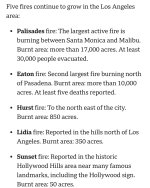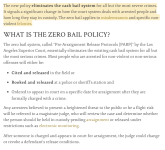In those locations where deficiencies did develop, the cause was solely the result of an inability of the distribution system in the immediate vicinity of the fire to sustain a prolonged overload that far exceeded designed capacity. Where hydrants failed, it was invariable at higher elevations at times when tremendous amounts of water were being taken from the mains at lower levels.
The Bel Air-Brentwood area is served by both a gravity flow and a pumped water system. From the San Fernando Valley on the north, large 60 and 72-inch trunk lines supply pumping stations which lift water into a number of reservoirs and tanks situated in the mountains. A 16-inch main which follows Mulholland Drive above the fire areas is fed from these storage points. From this main, 8 and 12-inch distribution mains go down into the canyons and along the ridges of the southern slope to supply the higher portions of the canyons and to assist in the maintenance of proper levels in various holding tanks. Distribution mains extend through the entire north-south length of the canyons between Mulholland Drive and Sunset Blvd. This latter thoroughfare follows the line of foothills on the southern side of the mountains. Automatic pressure regulators installed in these canyon mains balance supplies between the gravity flow from the summit and those pumped from the south.
In Stone Canyon are two reservoirs having a combined total capacity of 10,894 acre-feet. A large main goes south from these reservoirs to connect to a 36-inch supply main which follows Sunset Blvd. westerly toward Pacific Palisades near the ocean. Strategically placed pumping stations carry water from this main up into the lower canyons and ridges north of Sunset Blvd. to supply the smaller mains and holding tanks of the Bel Air and Brentwood sections. On the first day of the fire, two new pumping stations and one 16-inch main which were nearing completion were rushed into service for the first time to augment water supplies.
During the course of the fire, water usage in the area reached unprecedented levels. Total consumption through the first two days was 77,500,000 gallons. This represents an increase of 35,000,000 gallons over normal consumption during a like period. Peak use at the apex of fire operations exceeded 50,000 gallons per minute. Required fire flow for the entire fire area, based on N.B.F.U. standards for localities with comparable population densities, would be 6,100 gallons per minute for a maximum period of ten hours. A total amount of 3,660,000 gallons would satisfy this demand. The actual amounts delivered in the fire area for firefighting purposes was nearly ten times this standard.



